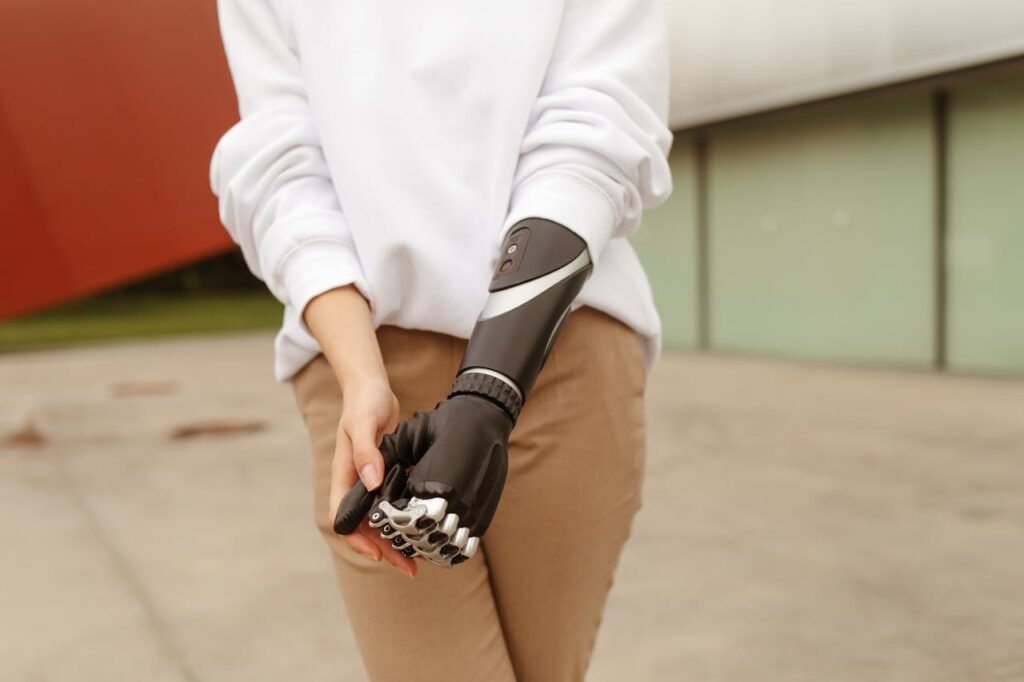A prosthetic demo is not just about technology. It is about discovering whether the device feels right, fits well, and supports your daily life. But before you even step into the clinic or join a trial session, there is a question that weighs heavily for many families: will insurance cover it?
In India, the cost of prosthetics is often a barrier. Imported bionic hands can cost lakhs, and even affordable options require planning. This is where insurance and cashless options come into focus. People want to know whether their demo sessions, fittings, or trial periods are included in their policy, and if not, what other options exist.
At RoboBionics, we have spoken with hundreds of users who face the same doubts: Will my policy pay for the trial? Do I need to pay upfront and then claim? Is cashless possible? In this article, we break it all down—what insurance usually covers, where gaps exist, and how you can navigate the system without stress.
Understanding the Basics of Insurance for Prosthetics
How Insurance Usually Works in India

In India, most health insurance policies are designed around hospital stays and surgeries. They cover emergencies, operations, or specific treatments. Prosthetics, however, often fall into a gray area because they are considered medical devices, not direct treatments.
Why Prosthetic Coverage Is Different
A prosthetic is not a temporary drug or bandage. It is a long-term device that becomes part of your body. Because of this, many insurers treat it like equipment instead of a medical necessity. This difference affects how claims are processed and whether trials are included.
Where Prosthetic Trials Fit In
Trials are part of the fitting process. They help you test comfort, response, and function before making a final decision. But insurers often view trials as optional, not essential. This is why it is important to understand what your policy says and how it treats devices.
The Reality of Coverage for Prosthetic Demos
Current Situation in India
Right now, most insurance providers in India do not cover demo sessions directly. They may cover surgery for amputation, but not the device or its trial. This leaves patients confused and worried.
Why Trials Are Not Covered
From the insurer’s perspective, trials are seen as evaluations, not treatments. Since no hospital admission or surgery is involved, they classify it outside the normal claim structure. Unfortunately, this does not reflect the real importance of trials for patients.
Exceptions and Rare Cases
Some high-end policies or corporate group insurances may allow partial coverage for prosthetics, especially if linked to rehabilitation. In such cases, trials may be considered part of the rehab journey. These are exceptions, not the norm, but they are worth exploring.
Cashless Options and What They Mean
How Cashless Works
In cashless insurance, the hospital or clinic ties up with the insurer. Instead of paying upfront, the cost is settled directly. For prosthetics, cashless is rare, but some rehabilitation centers are beginning to push for it.
Why Cashless Is Difficult for Prosthetics
Prosthetic centers are often not registered as hospitals. Without that registration, insurers hesitate to offer cashless settlements. Since most demo sessions happen outside hospitals, patients usually pay upfront and then seek reimbursement if allowed.
The Future of Cashless in Prosthetics
As awareness grows, more insurers are being asked by patients and startups like ours to include prosthetic care. Cashless options may become available in the future, especially if prosthetic centers partner with insurers. For now, it remains limited.
How to Approach Insurance for Trials
Reading the Fine Print
Always check your insurance policy documents. Look for terms like “rehabilitation devices” or “durable medical equipment.” If these are included, you may have a chance to claim prosthetic costs, including trials.
Talking to Your Insurer Directly
Do not rely only on agents or generic websites. Speak directly to the insurer and ask: “Are prosthetic trials covered?” Even if the answer is no, document the response. This clarity will help you plan your budget.
Exploring Alternatives
If your insurance does not cover demos, explore other avenues. Some NGOs, foundations, or CSR programs provide financial help for prosthetic trials and fittings. Asking around can open doors you did not expect.
Real Experiences from Prosthetic Users
When Insurance Stopped at Surgery
Ankit, a young engineer from Lucknow, lost his arm in an accident. His insurance covered the surgery, hospital stay, and medication. But when it came time to explore prosthetic options, the insurer said it was “not a medical requirement.”
Ankit was shocked. For him, a prosthetic was the bridge between recovery and living normally again. After discussions and multiple letters from his doctor explaining the medical importance of a prosthetic, the insurer still refused coverage for his demo and device.
His experience is common. Most insurers separate recovery from rehabilitation, even though both are part of healing. This gap leaves many users like Ankit with out-of-pocket expenses.
When Corporate Insurance Helped
Priya, a teacher in Pune, had a very different experience. Her employer’s group insurance policy included coverage for rehabilitation equipment. When she went for her prosthetic demo, she contacted the HR department, who coordinated with the insurance provider.
They approved partial coverage—50 percent of the trial and fitting costs—because her prosthetist documented that the device was medically essential for her teaching career. This success story shows that persistence and clear communication can make a difference.
When CSR and NGOs Step In
Not everyone has insurance that helps. For Arif, a student from Bihar, the cost of prosthetic demos seemed impossible to afford. Through a non-profit partner working with RoboBionics, he received partial funding for the trial and device. The organization understood the life-changing impact of the prosthetic, even when insurers did not.
These stories highlight one truth—protection may not always come from insurance, but solutions exist if you know where to look.
Why Insurers Hesitate to Cover Prosthetic Trials
The Historical Mindset
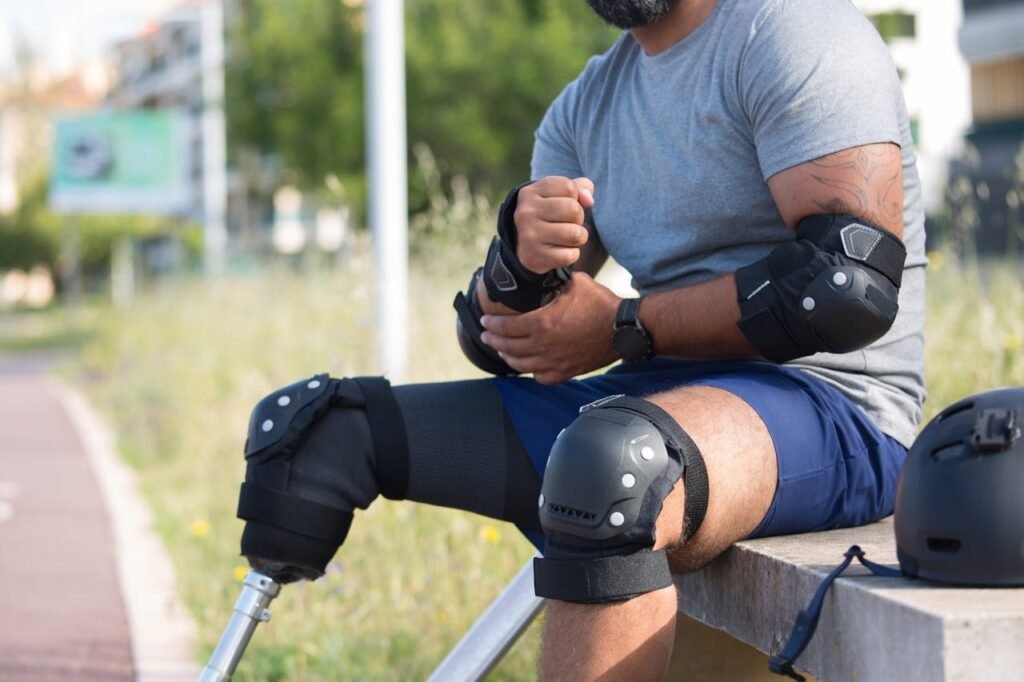
Health insurance in India grew around hospitals and surgeries. Devices like prosthetics were viewed as optional add-ons, not necessities. This mindset still shapes how claims are assessed.
Lack of Awareness
Many insurers are simply not aware of how advanced prosthetics have become. They imagine wooden limbs or basic aids, not modern, sensor-based devices that allow people to regain full control of their lives. Awareness among policy teams remains low.
Complex Cost Structures
Every prosthetic is custom-made. Prices vary depending on the type—mechanical, myoelectric, or bionic—and on individual needs. Insurers find it difficult to standardize such costs, so they often choose to exclude them altogether.
What You Can Do Before Your Demo
Step One: Gather Medical Documents
Before reaching out to your insurer, collect every medical report related to your amputation or limb condition. Include surgery notes, prescriptions, and any recommendation letters from your doctor. These prove that your prosthetic is not cosmetic but functional and necessary.
Step Two: Get a Recommendation Letter
Ask your prosthetist or orthopedic specialist to write a short letter explaining why the trial and fitting are part of your medical rehabilitation. Use clear language—words like “functional recovery” and “daily mobility” make insurers see the real medical value.
Step Three: Speak to the Right Department
Instead of customer care, contact the “claims” or “medical assessment” department of your insurance company. They handle exceptions and can guide you on how to file a special request.
Step Four: Keep Records of Every Call
Note down dates, times, and the names of representatives you speak with. These records help if you need to appeal a rejection later. Insurance companies respond more quickly when they see you are organized and serious.
Negotiating with Insurance Providers
Be Polite but Firm
When you speak with an insurer, stay calm but clear. Explain how a prosthetic trial is not a luxury but a step toward independence. Share examples from your daily life—how you need it for work, cooking, or mobility. Real-life stories have more power than technical arguments.
Use Documentation as Your Shield
Attach reports, letters, and even pictures of your condition if needed. Visuals and written proof strengthen your case. The more you show that the device is necessary for daily living, the harder it becomes for the insurer to deny it.
Explore Special Clauses
Some insurers offer optional “top-up covers” or “riders.” These sometimes include rehabilitation or assistive devices. Ask if your policy can be upgraded to include such benefits before your next renewal.
Ask About Reimbursement Routes
If cashless is not possible, you can still apply for reimbursement. Pay upfront and keep every receipt—travel, demo session, consultation, and device cost. Submitting a well-documented claim gives you a fair chance of getting partial reimbursement.
Understanding Reimbursement in Practice
How Reimbursement Works
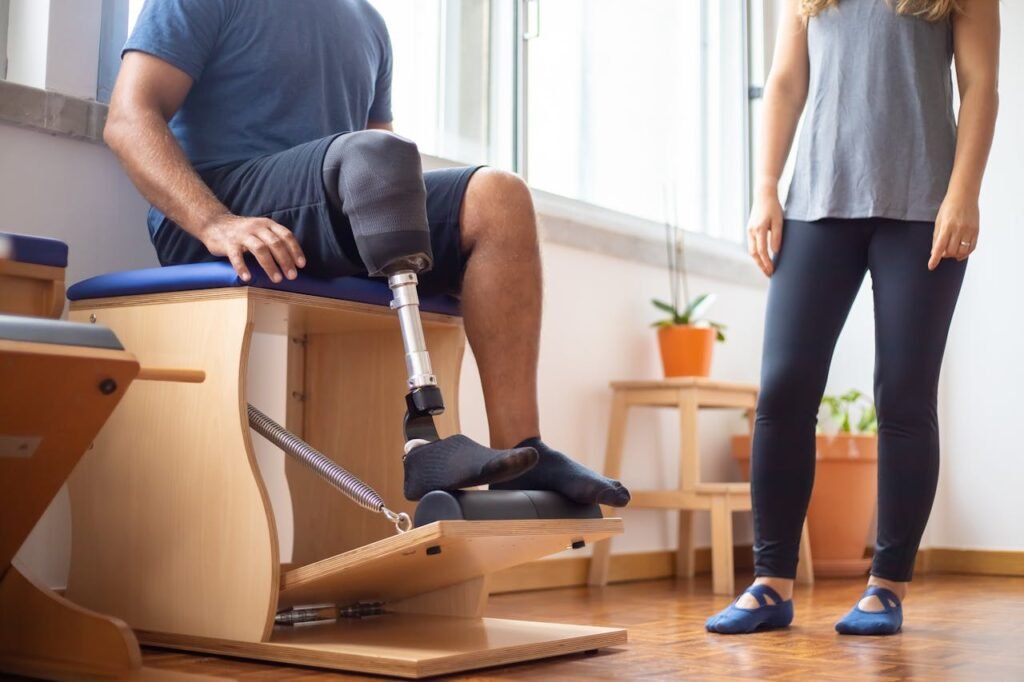
In reimbursement, you first pay for the service and then file a claim with the insurer. The insurer reviews your documents, checks your policy terms, and decides how much can be repaid. This process may take a few weeks but is still worth pursuing.
What You Need to Submit
You will need the following: the prosthetist’s invoice, a doctor’s prescription, a letter explaining the medical need, and your payment receipts. Some insurers also ask for before-and-after photos or clinic certificates confirming you underwent a fitting.
Common Mistakes to Avoid
Many claims get delayed because of missing papers. Always double-check before submission. Avoid vague letters like “patient needs prosthetic.” Instead, specify: “Prosthetic trial and fitting required for restoration of daily motor function.”
The Cashless Question
Why Cashless Is Rare for Prosthetics
Cashless systems depend on hospital networks. Since most prosthetic centers are independent or outpatient facilities, they fall outside these networks. This is why cashless facilities are almost never available for prosthetic demos.
The One Possible Workaround
If your demo happens inside a hospital-based rehabilitation center, cashless may work. The hospital can bill the insurer directly under “rehabilitation services.” It is rare but possible in certain multispecialty hospitals that have prosthetic departments.
How the Future May Change
In the future, startups and insurers are expected to work together to change this. As technology and healthcare become more connected, prosthetic centers may soon be recognized as essential medical partners, not just external providers.
Insurance Landscape in India: Where We Stand Today
The Public and Private Divide
In India, insurance comes from two main sources—government-backed schemes and private providers. Each works differently when it comes to prosthetic care. Government plans focus on basic support for the masses, while private insurers offer personalized but stricter policies.
Government Health Schemes
Schemes like Ayushman Bharat, Chief Minister’s Health Schemes (state-wise), and the Employees’ State Insurance Scheme (ESIC) aim to make healthcare affordable for all. However, prosthetic demos or fittings are rarely part of their structured benefits. Most cover surgery and rehabilitation in hospitals, but not the device itself.
That said, Ayushman Bharat has occasionally supported prosthetic fittings under rehabilitation packages when hospitals advocate for patients. So if you are eligible, it is worth asking your hospital or clinic to check.
Private Insurance Providers
Private insurance is where most prosthetic users look for help. Big names like HDFC Ergo, ICICI Lombard, Star Health, Niva Bupa, and Tata AIG provide rehabilitation coverage in some premium plans. However, prosthetic devices are typically treated as “external appliances” and are only partially reimbursed, if at all.
Employer-Based Group Insurance
Corporate or institutional policies offer slightly better chances. Since these plans are negotiated by employers, they can include add-ons like rehabilitation or assistive devices. If you are covered by your company, it is worth talking to your HR department about expanding coverage for prosthetics.
The Role of Disability Certificates in Coverage
Why They Matter
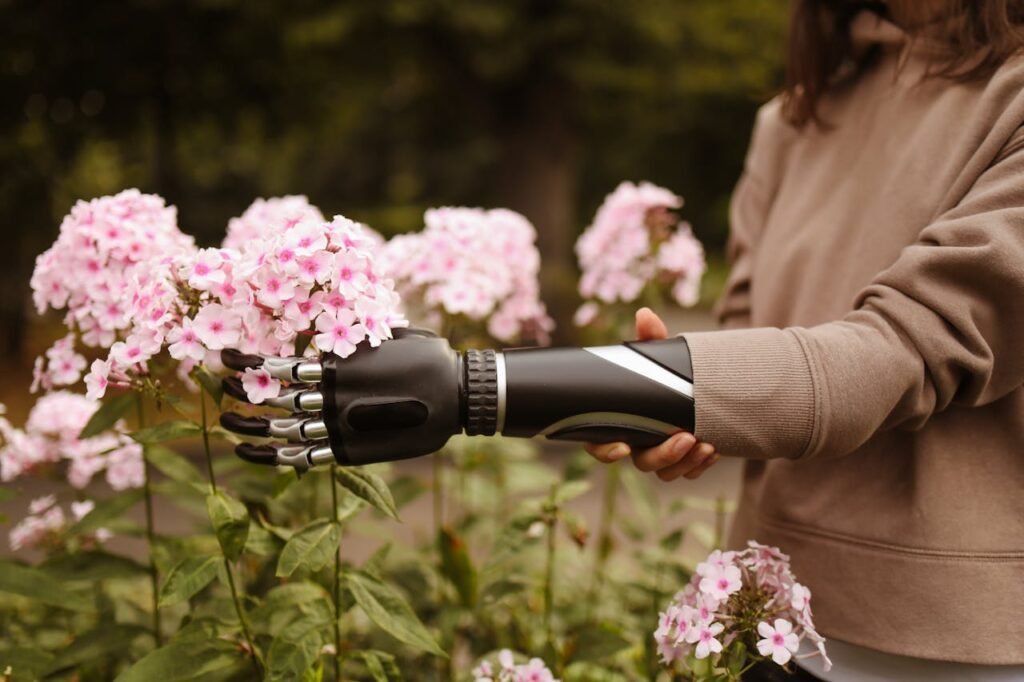
In India, the government recognizes certain categories of physical disabilities. If your amputation or limb loss falls under this, you can apply for a disability certificate from a government hospital. This document can sometimes open doors to financial support for prosthetics.
How It Helps
Some insurers and welfare schemes ask for this certificate as proof of medical need. Having it ready makes it easier to apply for reimbursement, government aid, or CSR funding. It is not a guarantee of coverage, but it strengthens your case.
Where to Get It
You can apply through district hospitals or disability assessment boards. The process may take a few days but is simple if you have your medical documents and reports.
Government Support Beyond Insurance
Artificial Limb Manufacturing Corporation of India (ALIMCO)
ALIMCO, under the Ministry of Social Justice and Empowerment, provides free or subsidized prosthetics to eligible individuals. While they may not offer high-end bionic limbs, their programs are useful for basic functional prosthetics.
District Disability Rehabilitation Centres (DDRCs)
These centers exist across India to help people with disabilities access rehabilitation services. They can guide you to prosthetic programs or financial aid. Visiting your nearest DDRC before your demo might give you more clarity on available support.
State-Level Aid Programs
Some states, such as Tamil Nadu, Maharashtra, and Kerala, have special prosthetic assistance funds. These can cover partial or full costs of a prosthetic, depending on eligibility. Even if these programs don’t directly cover trials, they can reduce your overall expenses once you decide to buy the prosthetic.
Corporate Social Responsibility (CSR) and NGOs
How CSR Helps
Many companies in India fund healthcare initiatives through their CSR programs. Some partner with hospitals or startups like RoboBionics to provide subsidized prosthetics. They may also cover demo sessions for financially challenged users.
How to Find Them
Ask your prosthetic provider if they collaborate with any CSR programs. Often, clinics maintain relationships with organizations that can fund trials or fittings. A short email or phone call can sometimes unlock unexpected support.
NGOs and Trusts
NGOs such as Bhagwan Mahaveer Viklang Sahayata Samiti (makers of the Jaipur Foot), Rotary Clubs, and smaller community trusts frequently sponsor prosthetic fittings and demos. Their aim is simple—to restore independence for those who cannot afford it.
Tips for Financial Planning
Start Saving Early
If you know a prosthetic trial is in your future, begin setting aside money now. Even small monthly savings can build a safety net over time.
Use EMI and Financing Options
Some prosthetic manufacturers, including RoboBionics, offer EMI options for prosthetic devices. While trials themselves may not always be financed, this reduces financial strain once you finalize your choice.
Keep Records for Tax Benefits
Under Section 80U of the Income Tax Act, individuals with disabilities can claim tax deductions. Saving your prosthetic bills, demo receipts, and related documents helps you claim benefits during filing.
The Future of Prosthetic Insurance
Policy Change on the Horizon
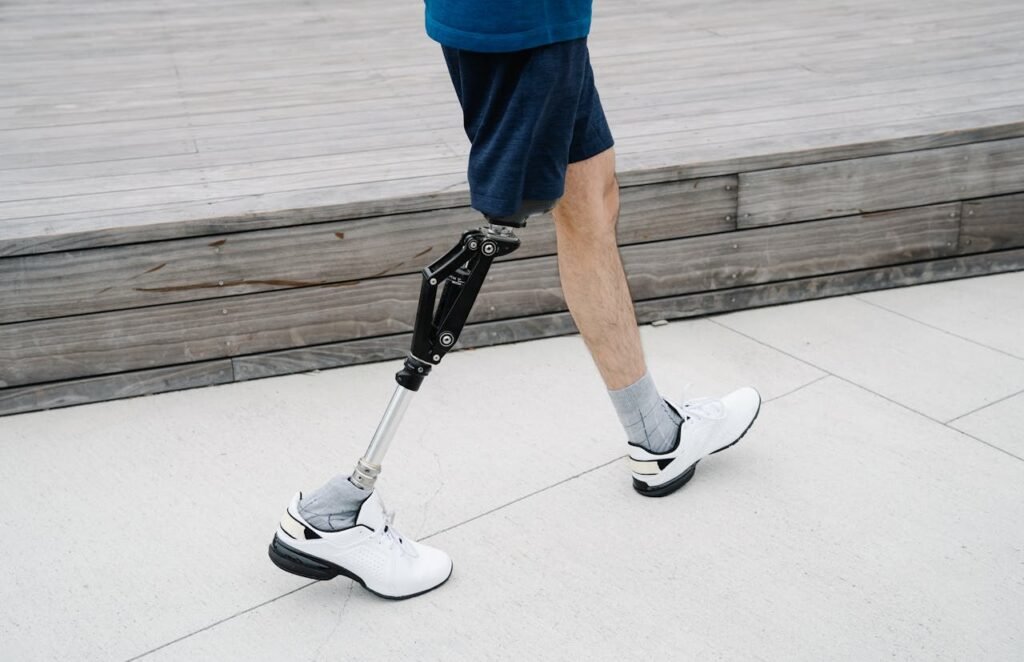
There is growing discussion in India about recognizing prosthetics as essential medical aids. As prosthetic technology advances, regulators are being urged to update insurance frameworks. Industry groups, prosthetists, and patient advocates are actively pushing for change.
Partnerships Between Startups and Insurers
Some prosthetic startups, including RoboBionics, are working to partner with insurers to create specialized policies for prosthetic users. These would include demo sessions, fittings, and long-term maintenance under one plan.
User Demand Is Driving Reform
The more people ask insurers about prosthetic coverage, the faster policies will change. Every inquiry adds pressure on the system to adapt. Your questions today become the foundation for better access tomorrow.
Your Next Steps
Ask Before You Assume
Never assume your insurance will not help. Ask, verify, and document the response. Some plans may surprise you with partial coverage or future eligibility.
Collect All Evidence
The more proof you have of medical necessity, the stronger your case becomes. Doctor’s notes, medical history, and prosthetist recommendations can turn a rejection into an approval.
Combine Resources
You can combine insurance, CSR, and government support. Even if one option covers only part of your cost, using multiple sources together can reduce your total expense significantly.
Conclusion
The question of whether prosthetic demos are covered by insurance does not yet have a simple yes or no answer. For most people in India today, trials are not directly covered. But that is not the end of the story. With preparation, persistence, and awareness, you can still find ways to reduce the financial load.
Insurance systems are changing slowly. As more people demand prosthetic coverage, awareness will grow. Cashless facilities may still be rare, but the future looks brighter. Government programs, CSR funding, and flexible payment plans are already filling the gap.
At RoboBionics, we believe that financial limitations should never stop someone from regaining independence. That is why we guide every user through not just fittings, but funding options. Whether it’s helping you talk to your insurer, find an NGO, or access a CSR initiative, our team is with you every step of the way.
Your prosthetic journey is about empowerment—about turning hope into movement and movement into freedom. And if the system does not yet cover it fully, we help you find a way to make it possible anyway.
Schedule your prosthetic demo with RoboBionics and let’s take the first step together—toward independence, confidence, and a future where every trial is truly covered, in every sense of the word.



